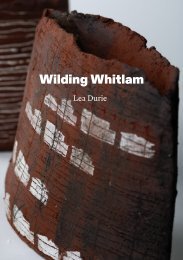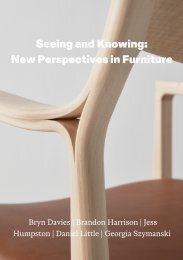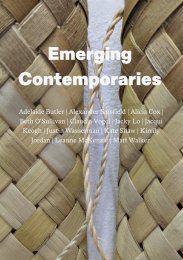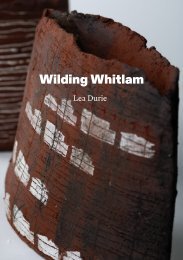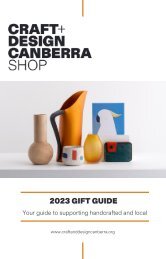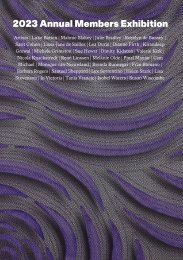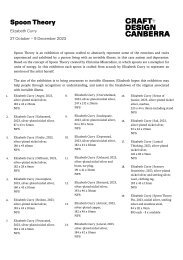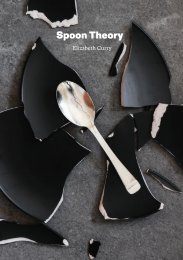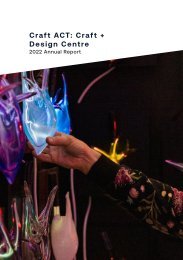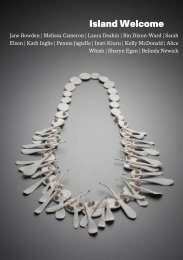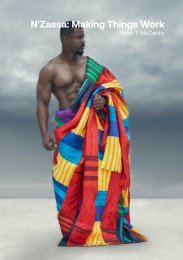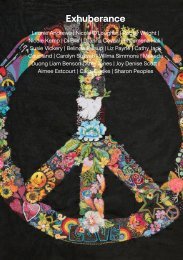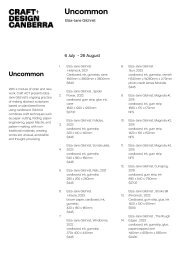Rhizoming: Language of print and place
Jan Hogan 16 May – 6 July 2019 Rhizoming: Language of Print and Place aims to explore the entanglement of nature, place and culture through a woodcut installation and accompanying offshoots based on artists books and objects. The works respond to the patterns and rhythms of a suburban beach on the Derwent River in Hobart. The exhibition aims to creatively explore, through printmaking and multiples, Deleuze’s theory that rhizomes pertain to a map that is always detachable, connectable, reversible, modifiable and has multiple entryways and exits with its own lines of flight.
Jan Hogan
16 May – 6 July 2019
Rhizoming: Language of Print and Place aims to explore the entanglement of nature, place and culture through a woodcut installation and accompanying offshoots based on artists books and objects.
The works respond to the patterns and rhythms of a suburban beach on the Derwent River in Hobart. The exhibition aims to creatively explore, through printmaking and multiples, Deleuze’s theory that rhizomes pertain to a map that is always detachable, connectable, reversible, modifiable and has multiple entryways and exits with its own lines of flight.
You also want an ePaper? Increase the reach of your titles
YUMPU automatically turns print PDFs into web optimized ePapers that Google loves.
RHIZOMING<br />
LANGUAGE OF PRINT AND PLACE<br />
Craft ACT Craft + Design Centre<br />
16 MAY – 6 JULY 2019
Craft ACT: Craft + Design Centre is supported by the<br />
ACT Government, the Visual Arts <strong>and</strong> Craft Strategy –<br />
an initiative <strong>of</strong> the Australian State <strong>and</strong> Territory Governments,<br />
<strong>and</strong> the Australia Council for the Arts – the<br />
Australian Government’s arts funding <strong>and</strong> advisory<br />
body.<br />
CRAFT ACT CRAFT + DESIGN CENTRE<br />
Tues–Fri 10am–5pm<br />
Saturdays 12–4pm<br />
Level 1, North Building, 180 London<br />
Circuit,<br />
Canberra ACT Australia<br />
+61 2 6262 9333<br />
www.craftact.org.au<br />
This project was assisted through Arts<br />
Tasmania by the Minister for the Arts <strong>and</strong><br />
by the University <strong>of</strong> Tasmania.<br />
Front Cover: Rocks Entanglement (detail), 2019, woodblock<br />
<strong>print</strong> on kozo <strong>and</strong> woodblock matrix.<br />
Back Cover: Photo: 5 Foot Photography.
Artist Statement<br />
Jan Hogan<br />
<strong>Rhizoming</strong> is about my slow immersion in Hinsby Beach on the Derwent Estuary as I<br />
locate myself in my new home. I walk <strong>and</strong> swim in this space, exploring the rocks <strong>and</strong><br />
caves, the tidal shifts <strong>and</strong> seasonal changes. The concept <strong>of</strong> rhizoming assists me in<br />
locating myself <strong>and</strong> my practice in new <strong>place</strong>s, accepting that I am an outsider but<br />
slowly allowing the new environment to weave into my way <strong>of</strong> being in the world. My<br />
art practice is my way <strong>of</strong> learning <strong>and</strong> responding to <strong>place</strong>. As a settler Australian I am<br />
like a rhizome, a shoot that breaks <strong>of</strong>f <strong>and</strong> adapts to new environments, sending out<br />
tendrils to ground myself in a location. I start with sketches <strong>and</strong> drawings, immersing<br />
paper into the water to see how this environment changes the patterns <strong>and</strong> marks,<br />
allowing the matter <strong>of</strong> the world to reveal the meaning <strong>of</strong> <strong>place</strong>. It is a slow process,<br />
time is required to allow <strong>place</strong> to seep in, past the beauty <strong>and</strong> spectacle <strong>and</strong> into<br />
resonance.<br />
The woodcuts aim to find a language to enable negotiations between the many agents<br />
committed to, <strong>and</strong> structuring, a <strong>place</strong>. This language is formed by materials <strong>and</strong><br />
forces <strong>and</strong> effects. Patterns are made that we can interpret <strong>and</strong> respond to in order to<br />
break away from the western tradition <strong>of</strong> binary logic to a more natural system. The<br />
philosopher Deleuze posits in his rhizome theory that it constantly makes connections<br />
between systems, from natural formations to social struggles to organisations <strong>of</strong><br />
power. A rhizome model allows for travel in every direction rather than in a linear<br />
fashion, as it can move in all directions <strong>and</strong> dimensions. It is about performance,<br />
the performance <strong>of</strong> the mark, <strong>and</strong> the performance <strong>of</strong> forming identity, a constantly<br />
shifting field <strong>of</strong> negotiations. The rhizome pertains to a map that must be produced,<br />
constructed, a map that is always detachable, connectable, reversible, modifiable <strong>and</strong><br />
has multiple entryways <strong>and</strong> exits with its own lines <strong>of</strong> flight. This theory assists my<br />
practice as a form <strong>of</strong> speculative way finding to tread a sensitive path on this earth.<br />
3
Rocks Entanglement, 2019, woodblock <strong>print</strong> on<br />
kozo <strong>and</strong> woodblock matrix.
Slow Looking<br />
catalogue essay: Anne Brennan<br />
The installation <strong>of</strong> <strong>print</strong>s <strong>and</strong> related<br />
objects in <strong>Rhizoming</strong> is a trace or<br />
record <strong>of</strong> the artist’s open-ended<br />
relationship with her site, a suburban<br />
Hobart beach, <strong>and</strong> her materials. She<br />
spends time observing what the site<br />
is doing, <strong>and</strong> how time operates on<br />
it through the movements <strong>of</strong> water<br />
<strong>and</strong> light upon its surfaces. Her work<br />
does not depend on mastery, either<br />
<strong>of</strong> the <strong>place</strong> itself or the materials she<br />
uses. Instead, she watches what the<br />
materials want to do, sometimes giving<br />
up even more control by surrendering<br />
her materials to the action <strong>of</strong> the site<br />
itself, laying out paper on the ground<br />
<strong>and</strong> allowing it to absorb the stains <strong>and</strong><br />
marks <strong>of</strong> earth <strong>and</strong> weather. Through<br />
this process, she comes to underst<strong>and</strong><br />
the patterns <strong>of</strong> her site.<br />
The work, which explores the<br />
relationship between her swimming<br />
<strong>and</strong> the rocks below the water’s<br />
surface, requires a special kind <strong>of</strong> slow,<br />
embodied looking to grasp hold <strong>of</strong><br />
its enormous, reiterated immersive<br />
program <strong>of</strong> patterning. It encourages<br />
you to move through it, echoing the<br />
physical journey <strong>of</strong> the artist across<br />
her beach, picking your way around<br />
<strong>and</strong> across the woodcut matrix that is<br />
mirrored in the composite woodblock<br />
<strong>print</strong> upon the wall <strong>of</strong> the gallery. The<br />
slow investment <strong>of</strong> time spent with this<br />
work, moving around <strong>and</strong> immersing<br />
yourself in the installation, twisting<br />
<strong>and</strong> turning with the ‘artists books’<br />
that are three-dimensional drawings in<br />
space, closes the circle between you,<br />
the artist, her materials <strong>and</strong> her site<br />
<strong>and</strong> mirrors the way in which she has<br />
slowed down her own time to match<br />
the temporal pulse <strong>of</strong> light, l<strong>and</strong> <strong>and</strong><br />
water as it acts upon the paper.<br />
Anne Brennan<br />
Honorary Visiting Fellow<br />
ANU School <strong>of</strong> Art <strong>and</strong> Design, Centre<br />
for Art History <strong>and</strong> Art Theory<br />
5
Photo: 5 Foot Photography
Detail <strong>of</strong> Rocks Entanglement, 2019,<br />
woodblock <strong>print</strong> on kozo <strong>and</strong> woodblock<br />
matrix. Photo: supplied by the artist.
Photo: 5 Foot Photography<br />
9
Biography<br />
Jan Hogan is a mid-career artist <strong>and</strong><br />
academic specializing in notions <strong>of</strong><br />
<strong>place</strong>; interweaving material traces <strong>and</strong><br />
memory held in natural <strong>and</strong> cultural<br />
sites. Through relocating around<br />
many sites in Australia, including<br />
remote areas such as Kununurra<strong>and</strong><br />
Uluru, Jan has become interested in<br />
how l<strong>and</strong>scapes have agency in the<br />
development <strong>of</strong> natural <strong>and</strong> cultural<br />
systems. Through her relocations Jan<br />
has set up a site-responsive practice<br />
that involves immersion in long term<br />
drawing projects that accumulate<br />
knowledge, marks <strong>and</strong> detritus that<br />
gradually seep into her unconscious.<br />
Her current location on the Derwent<br />
River in Hobart has involved a new<br />
underst<strong>and</strong>ing <strong>of</strong> the behavior <strong>of</strong><br />
freshwater <strong>and</strong> saltwater on ecologies<br />
10<br />
including the cultural materials <strong>of</strong> her<br />
art practice. The concept <strong>of</strong> rhizoming<br />
has accompanied her journeys<br />
around Australia that accepts her<br />
drifting status as a settler but allows<br />
a focus on environmental <strong>and</strong> social<br />
justice. <strong>Rhizoming</strong> provides a creative<br />
mapping that retains traces <strong>of</strong> <strong>place</strong>s<br />
<strong>and</strong> people encountered over time as<br />
her art practice settles <strong>and</strong> matures<br />
in each site. Her discipline <strong>and</strong> craft<br />
<strong>of</strong> <strong>print</strong>making has become focused<br />
on large-scale woodcuts that are<br />
developed after the initial drawing<br />
research. Like a rhizome, the woodcuts<br />
behave in response to environmental<br />
conditions, <strong>and</strong> are developed from<br />
the patterns <strong>and</strong> energies discovered<br />
over time.<br />
Photo: 5 Foot Photography
List <strong>of</strong> works<br />
1 Rock caress ii, 2019<br />
woodblock <strong>print</strong> on Kozo <strong>and</strong><br />
woodblock matrix<br />
$5,000 unique state<br />
2 Rocks Entanglement, 2019<br />
woodblock <strong>print</strong> on Kozo <strong>and</strong><br />
woodblock matrix<br />
$5,000 unique state<br />
3 Wayfinders, 2019<br />
artist book<br />
$200 large, $120 small<br />
4 Submersion, 2019<br />
Woodblock matrix<br />
NFS<br />
5 Rock Rhizome I, 2019<br />
Woodblock <strong>print</strong> on Kozo<br />
$500<br />
6 Rock Rhizome II, 2019<br />
Woodblock <strong>print</strong> on Kozo<br />
$500<br />
Prints 5 <strong>and</strong> 6: Edition <strong>of</strong> 5 each,<br />
sold in consecutive edition order.<br />
$500 each.<br />
11




